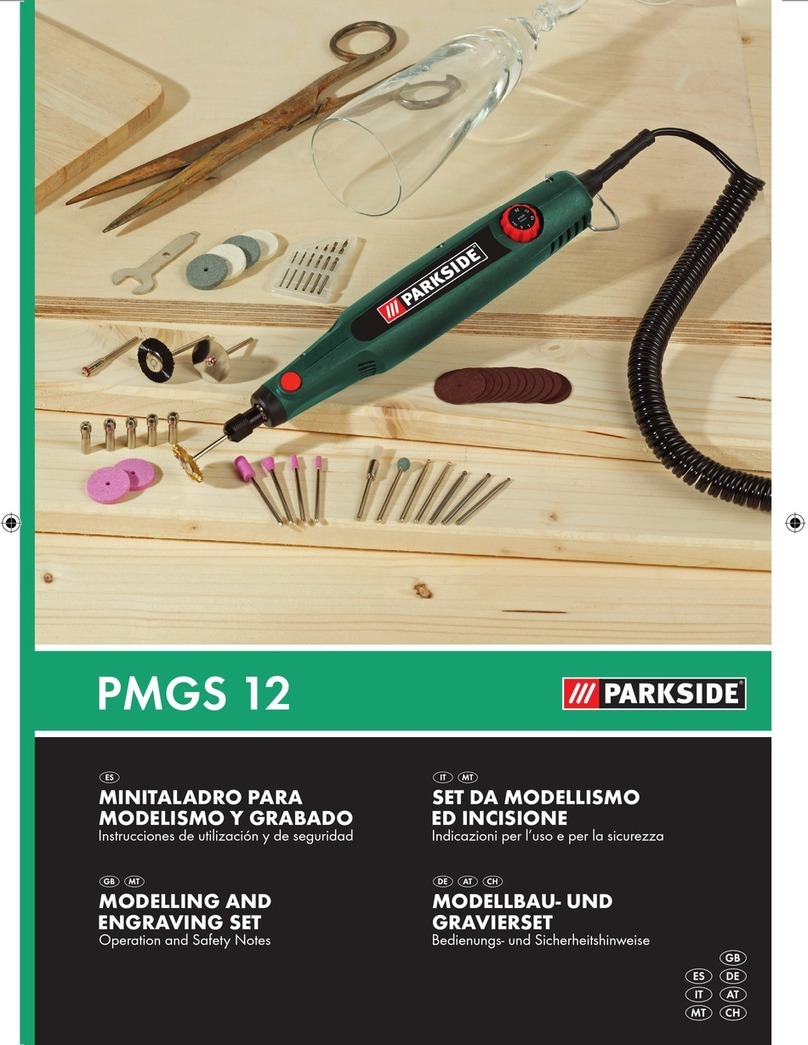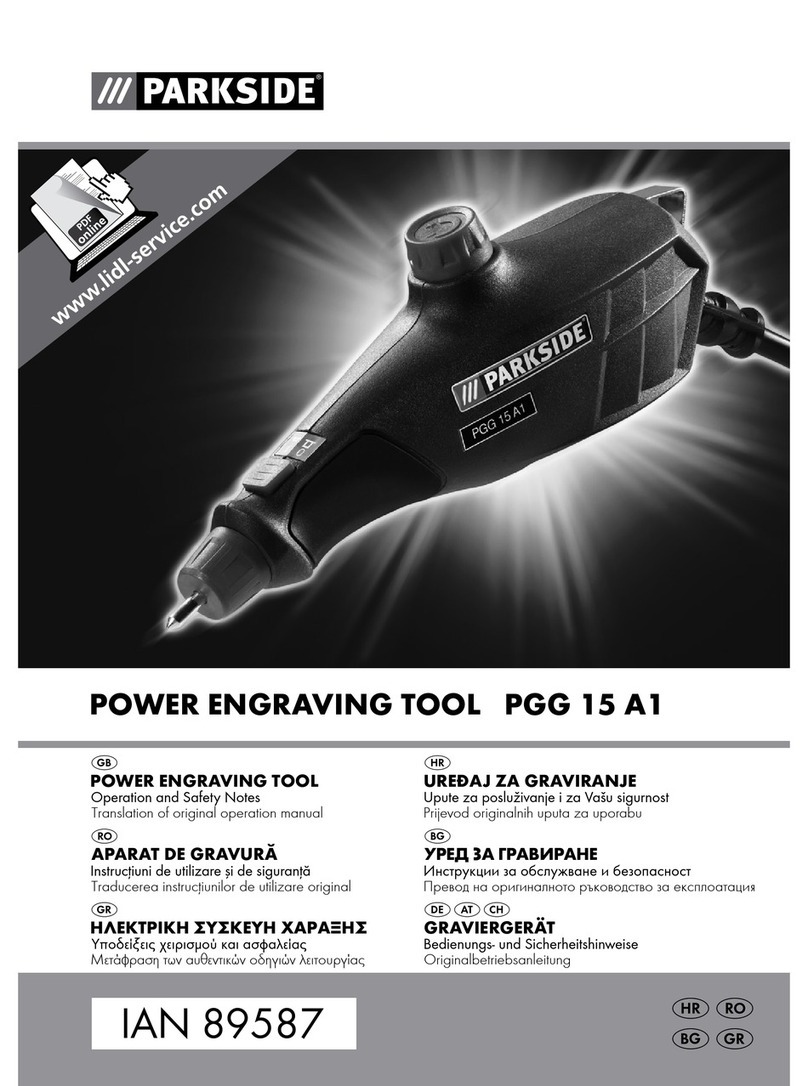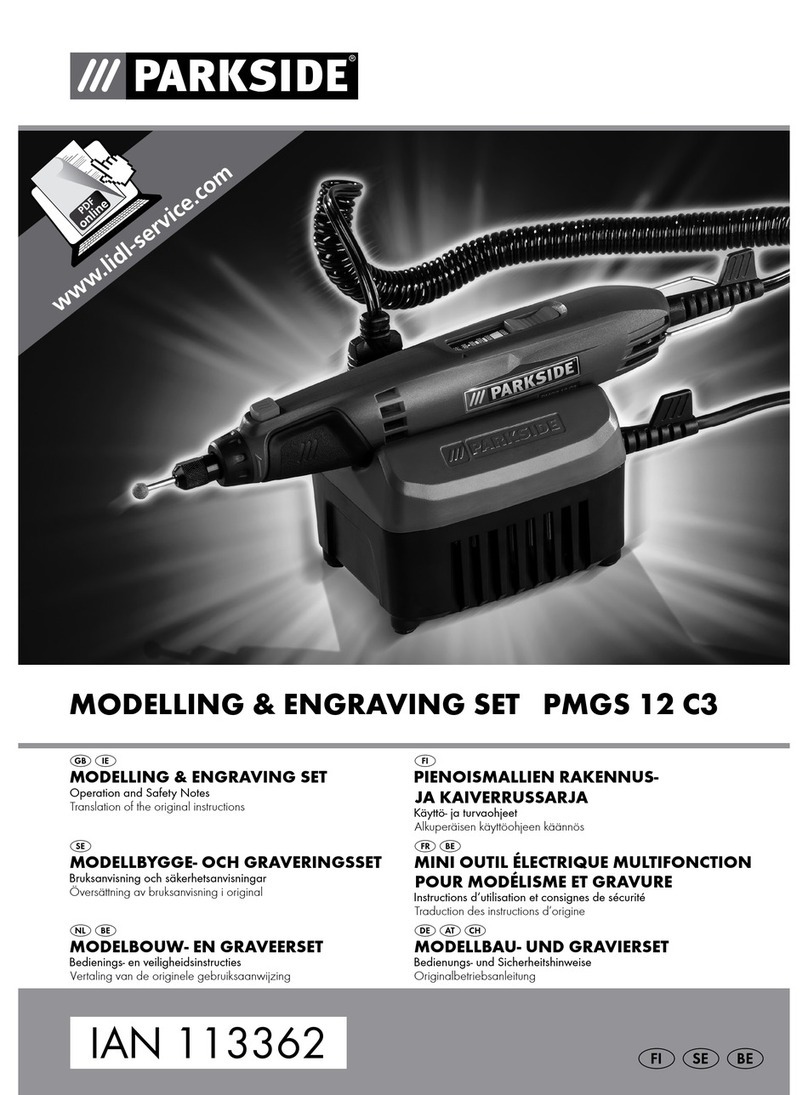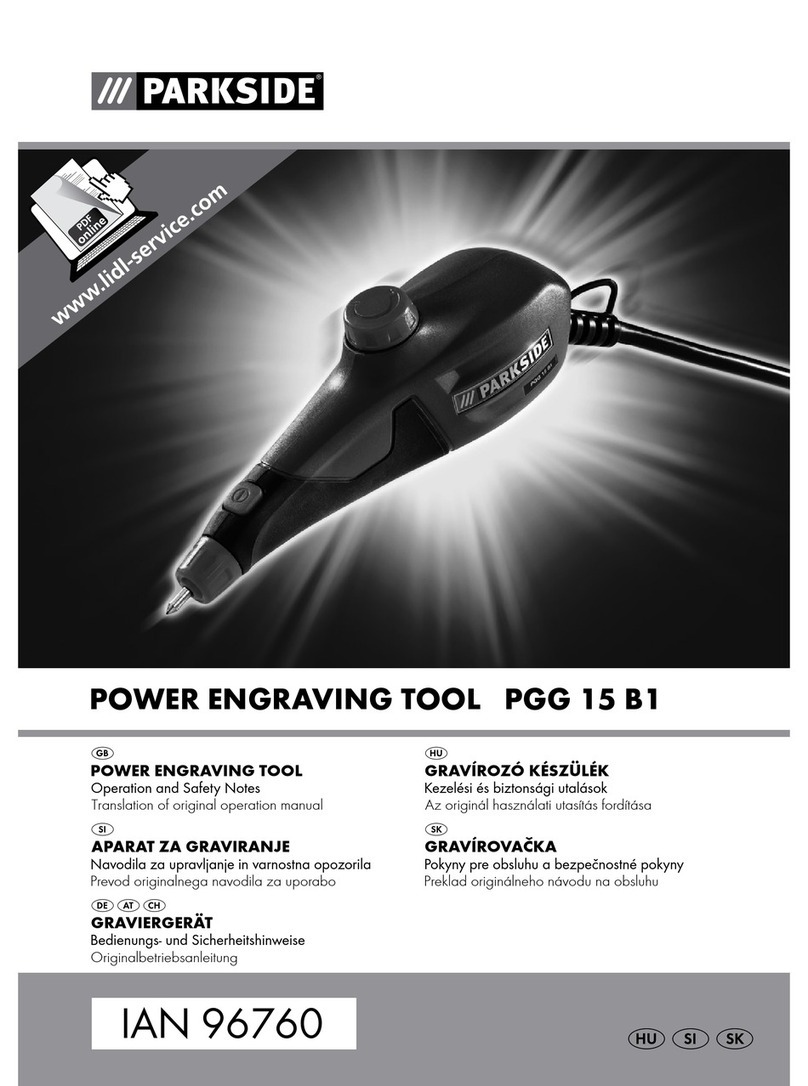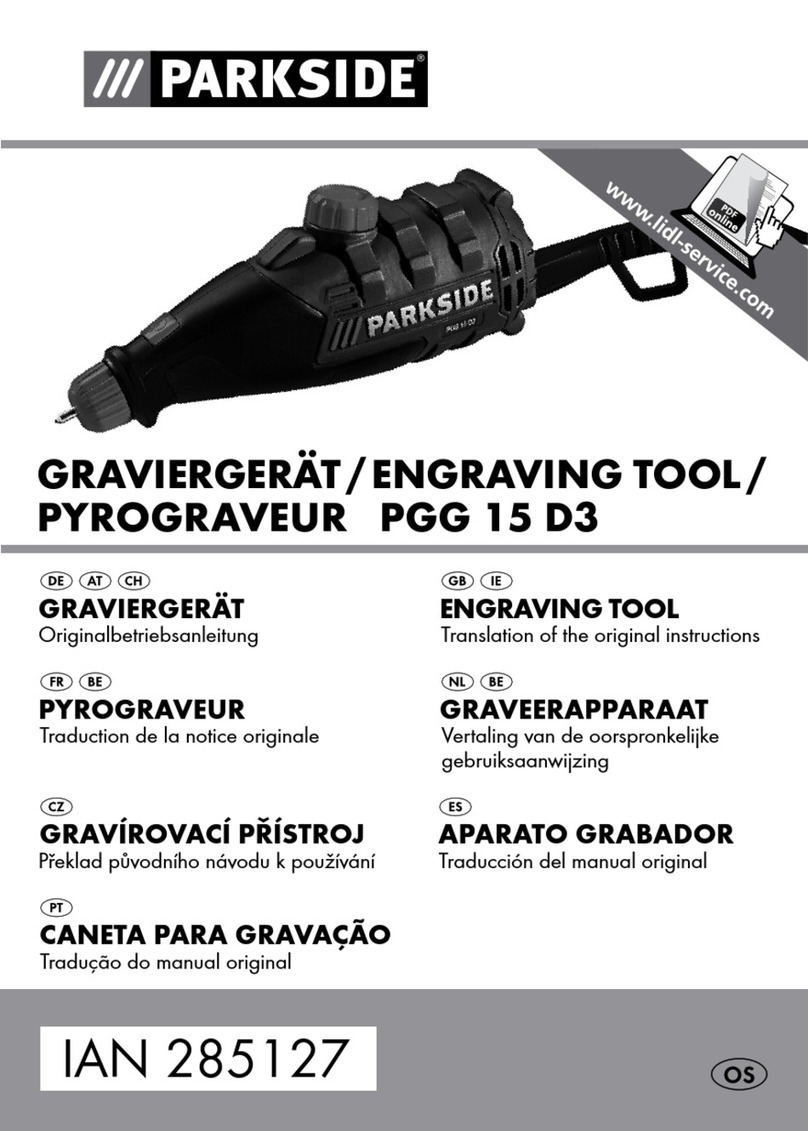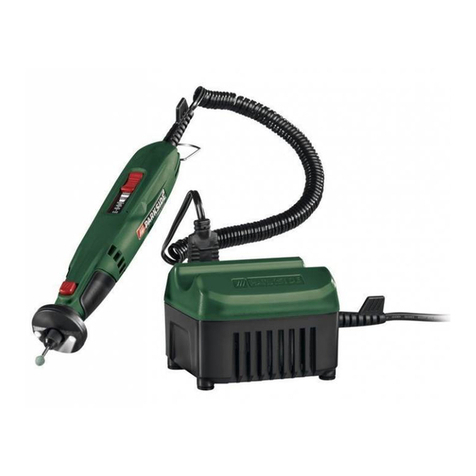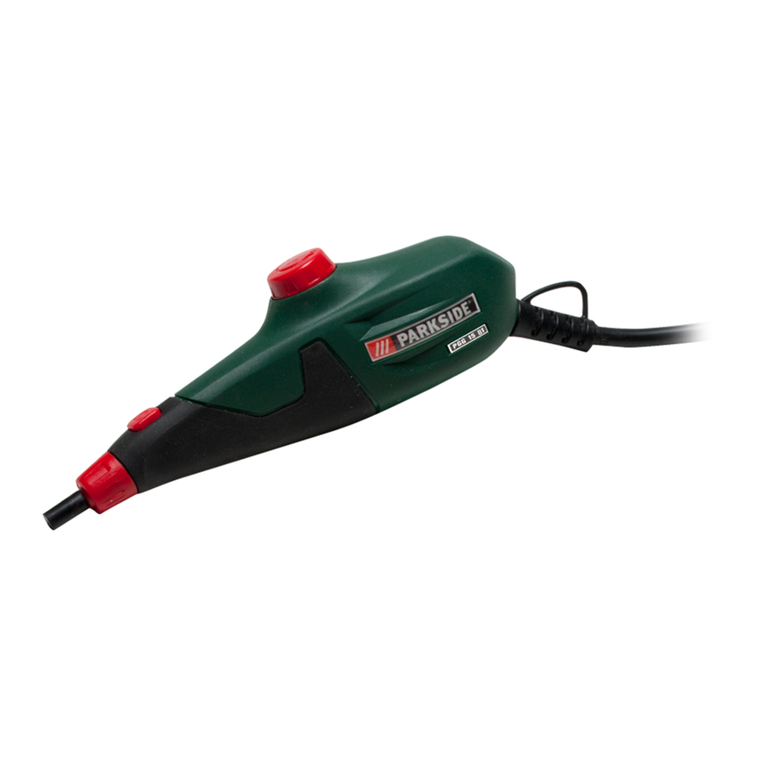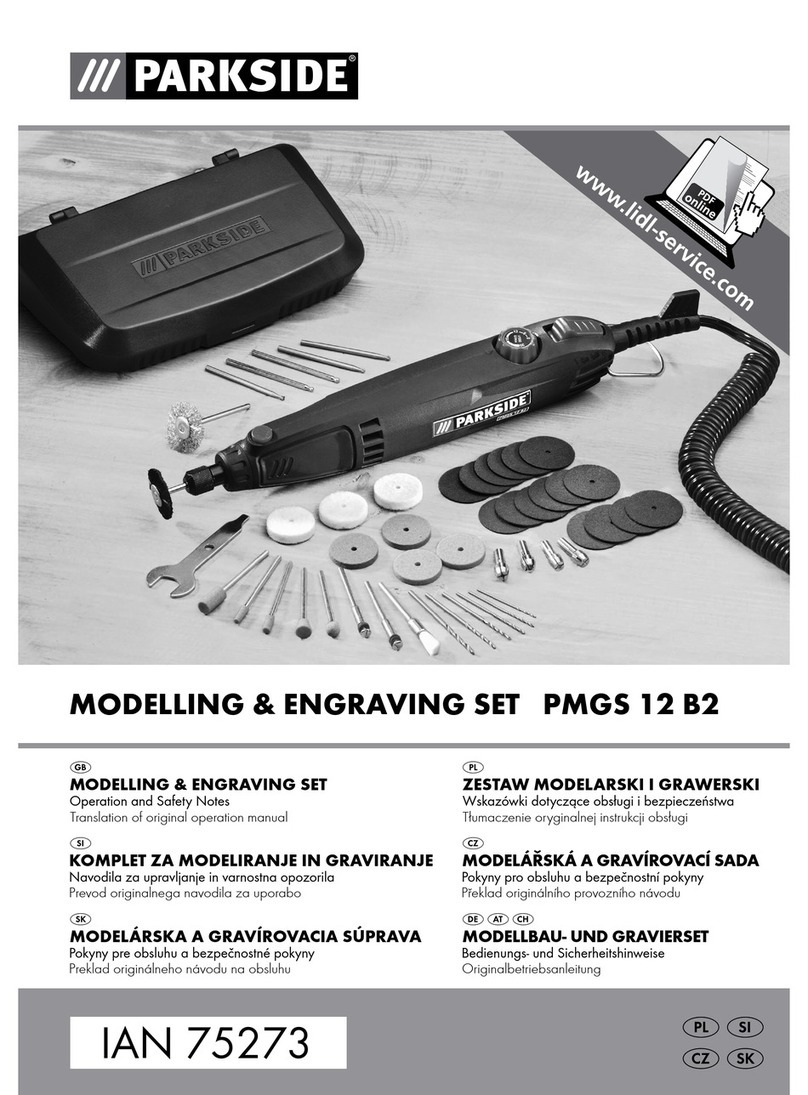PMGS 12 C3 GB│IE│CY │ 5 ■
Safety instructions for all applications
General safety instructions for grinding, sand-
paper sanding, working with wire brushes,
polishing, milling and abrasive cutting:
a) This power tool is intended for use as a grinder,
sandpaper sander, wire brush, polisher, milling
machine and abrasive cutting appliance.
Please follow all safety instructions, instruc-
tions, diagrams and data that you receive
with the appliance. If you do not observe the
following instructions, this can lead to electrical
shock, fire and/or serious injuries.
b) Do not use any accessories that have not been
provided or recommended by the manufac-
turer for this power tool. Just because you can
attach the accessories to your power tool, does
not ensure they are safe to use.
c) The permissible speed of the accessory tool
used must be at least as high as the maximum
speed specified for the power tool. Accessories
that rotate faster than the permissible rate can
break and throw pieces into the air.
d) The external diameter and thickness of the
accessory tool used must comply with the
dimensions of the power tool. Incorrectly
dimensioned accessory tools cannot be suffi-
ciently shielded or controlled.
e) Grinding discs, sanding drums or other ac-
cessories must match the grinding spindle
or collet chuck of your power tool exactly.
Accessory tools which do not fit precisely into
the take-up of the power tool will rotate un-
evenly, vibrate severely and can lead to a loss
of control.
f) Discs, grinding cylinders, cutting tools or other
accessories mounted on a mandrel must be
completely inserted in the collet or chuck.
Any "protrusion" or exposed parts of the
mandrel between the grinding tool and the
collet or chuck must be kept to a minimum.
If the mandrel is not sufficiently tightened or the
grinding tool protrudes too far, the tool could
come loose and been thrown out at high speed.
g) Never use damaged accessory tools. Before
each use, check accessory tools such as grind-
ing discs for chips or cracks, sanding drums
for cracks, wearing or excessive wear and tear
and wire brushes for loose or broken wires.
If the power tool or the accessory tool in use
is dropped, check to see if it is damaged or
use an undamaged accessory tool. When you
have checked and inserted the accessory tool,
ensure that you and any other people in the
vicinity remain outside of the range of the
rotating accessory tool and allow the tool
to rotate at maximum speed for one minute.
Damaged accessory tools usually break during
this test period.
h) Wear personal protective equipment.
Depending on the application, ensure that
you use full face protection, eye protection
or goggles. If required, use a dust mask, ear
protectors, protective gloves or special apron
to protect you from grindings and material
particles. Eyes should be protected from flying
debris that may be generated during certain
applications. Dust or filter masks must filter any
dust created by the application. If you are ex-
posed to loud noise for any length of time, you
may suffer hearing loss.
i) Ensure that other people remain at a safe dis-
tance to your workspace. Anyone who enters
the workspace must wear personal protective
equipment. Fragments of the workpiece or
broken accessory tools can fly off and cause
injury – even outside the immediate working
area.
j) Hold the power tool by the insulated gripping
surfaces, when performing an operation
where the accessory tool may contact hidden
wiring or its own cord. Contact with a live cable
can also make metal parts of the appliance live
and could result in an electric shock.
k) Always hold the power tool firmly. When
running up to full speed, the torque of the
motor can cause the power tool to twist.


